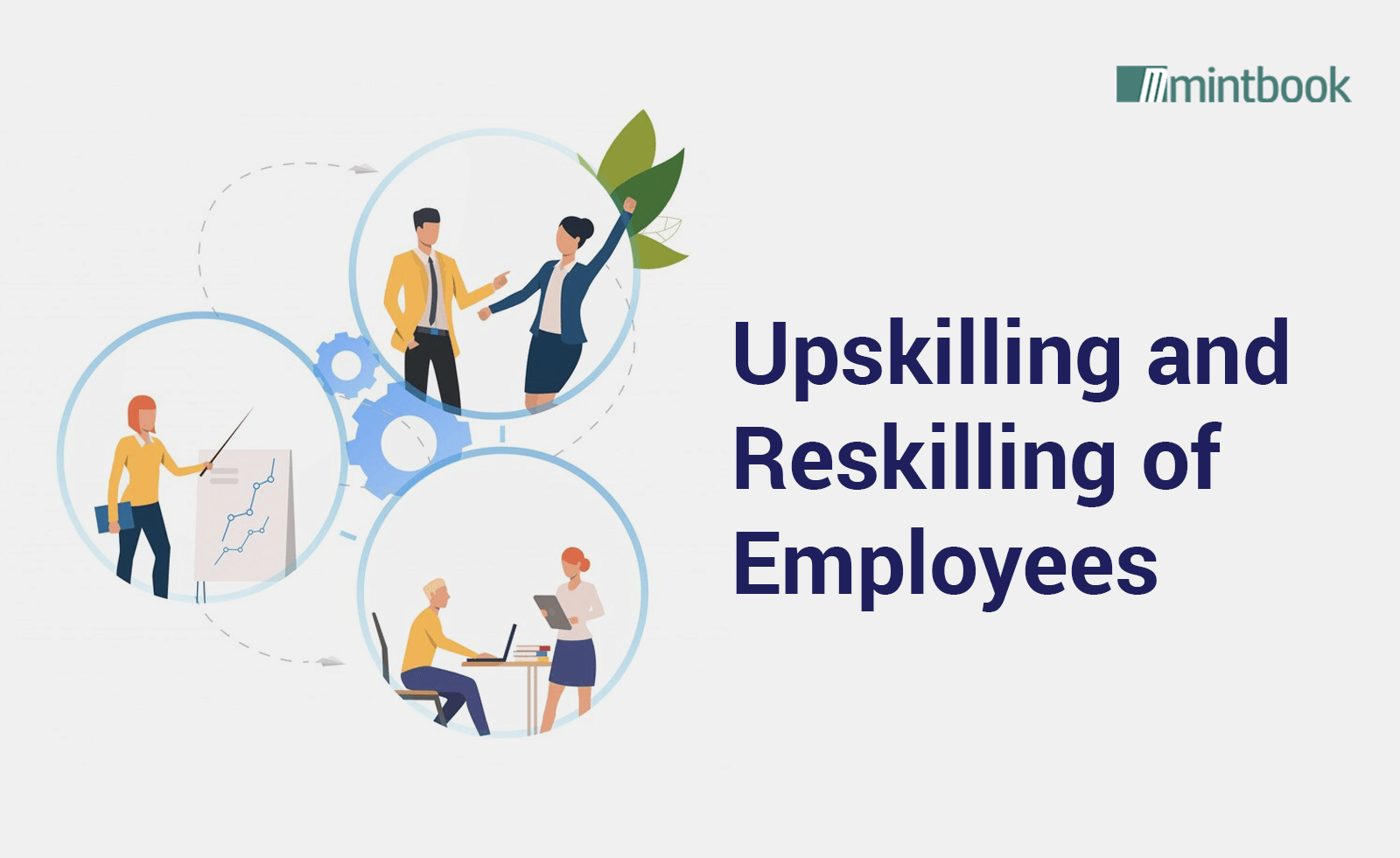New-generation employees prefer organizations that prioritize career and skill development. Likewise, many working professionals switch organizations due to the absence of career and skill development opportunities. Companies and startups attract and retain talent by making upskilling and reskilling an ongoing process.
They enhance employees’ career prospects, job security, and promotion opportunities by running upskilling programs. The upskilling programs create opportunities to acquire and enhance professional skills. In addition to improving operational efficiency and reducing skills gaps, upskilling programs keep employees motivated and satisfied.
Likewise, organizations create opportunities for employees to move into an advanced position by running reskilling programs. These reskilling programs improve employees’ proficiency by helping them acquire new skills. However, no organization can upskill and reskill employees successfully without overcoming constraints related to time, costs, and budgets.
Most companies and startups these days overcome these constraints by adopting online learning (eLearning). In addition to curbing upskilling and reskilling costs, eLearning tools drive skill development by keeping employees engaged and motivated. We are discussing how eLearning drives employee reskilling and upskilling by mitigating various constraints.
9 Ways eLearning Simplifies Employee Upskilling and Reskilling Initiatives
Self-Paced Learning
Unlike students, working professionals develop and hone skills after managing busy work schedules. They usually acquire knowledge after working hours. eLearning tools like learning management systems (LMS) enable them to develop skills by supporting self-paced learning. Employees can acquire knowledge anytime and anywhere by accessing the LMS on computers or mobile devices. Hence, he can progress through the reskilling or upskilling program conveniently and flexibly.
Multi-Format Content
While developing and improving professional skills, new-generation employees prefer digital content to physical content. However, they differ from each other in the category of content preferences. For instance, some employees prefer reading eBooks and journals, while others watch videos or listen to audio. Digital library software delivers eLearning content in various formats – eBooks, journals, quizzes, simulations, video, and audio. Hence, each employee can develop skills by accessing content in his preferred way.
Deep Understanding
Along with providing off-the-shelf content, new-age digital library software shares curated content with employees. The software curates relevant and insightful information from various sources using artificial intelligence (AI) algorithms. The curated content enables employees to understand a topic deeply by accessing different viewpoints and perspectives. At the same time, the thought leadership content helps them to understand a topic deeply in a shorter amount of time.
Learner Engagement and Motivation
Often employees find it challenging to develop new skills after meeting their professional responsibilities. ELearning software motivates and encourages employees to learn after working hours by fostering learner engagement. LMSs and digital library software keep learners engaged using gamification techniques like scorecards, coins, and badges. Learner engagement helps businesses reskill and upskill employees successfully by increasing online course completion rates.
Collaborative Learning
The lack of collaboration and interaction opportunities is often cited as a major shortcoming of eLearning. New-age LMS systems overcome this shortcoming by enabling employees to collaborate in a virtual learning environment. They facilitate collaboration and interaction by featuring discussion forums, chat rooms, and query corners. Collaborative learning boosts skill development initiatives by making employees share ideas and experiences with each other.
Virtual Mentorship
AI technologies have transformed corporate training by adding conversational and interactive elements. Organizations these days implement AI-powered chatbots that act like virtual instructors or mentors. Employees gather information and clear doubts by interacting with educational chatbots while developing new skills. In addition, the chatbots foster knowledge acquisition and retention by sharing information and insights collected from external and internal sources. Hence, it becomes easier for companies to support instructor-led training without hiring skilled trainers.
Real-Time Tracking
Businesses reskill and upskill employees by running various training programs. They find it challenging to streamline the process by monitoring and evaluating training programs individually. An eLearning dashboard helps managers monitor training programs based on real-time information about training programs, learners, and assignments. Managers can use the dashboard to generate and schedule custom reports. These custom reports make it easier for them to track important metrics like course completion rate, learner progress, average course completion time, and learner satisfaction.
Informed Decision-Making
eLearning tools generate large volumes of contextual data about learners. Learning analytics solutions gain actionable insights by measuring and analyzing the eLearning data automatically. The data-driven insights shared by the eLearning solution help managers understand what is working and what is not. Hence, they can boost employee reskilling and upskilling activities by making informed decisions. Managers can make data-driven decisions to improve knowledge retention, learning experiences, and learning outcomes.
Cost Reduction
Often small businesses and startups find it challenging to upskill and reskill employees due to cost constraints. Cloud-based eLearning tools help them control and curb costs by minimizing recurring expenses. For instance, a business can use cloud-based eLearning tools without incurring infrastructural and staffing costs. Also, it can save money by customizing the online software according to its precise needs. However, the business can scale the cloud-based eLearning tools on demand as the number of training programs and employees increases.
Conclusion
Workforce upskilling and reskilling help businesses attract top talent and retain skilled employees. ELearning helps them reskill and upskill employees by overcoming various constraints. For instance, an organization can curtail infrastructural and staffing costs by accessing cloud-based eLearning tools and solutions based on a pay-as-you-use pricing model.
Also, new-age eLearning tools drive upskilling and reskilling initiatives by keeping employees engaged and motivated. However, every organization can reskill and upskill employees successfully only by implementing several eLearning tools. For instance, it needs an LMS to create, manage, monitor, and deliver various upskilling and reskilling programs efficiently.
Likewise, it must enable employees to access eLearning content in multiple formats by implementing digital library software. Application programming interfaces (APIs) help organizations combine these eLearning tools by acting as messengers. Hence, it becomes easier for businesses to streamline upskilling and reskilling of employees by building a unified learning platform.

